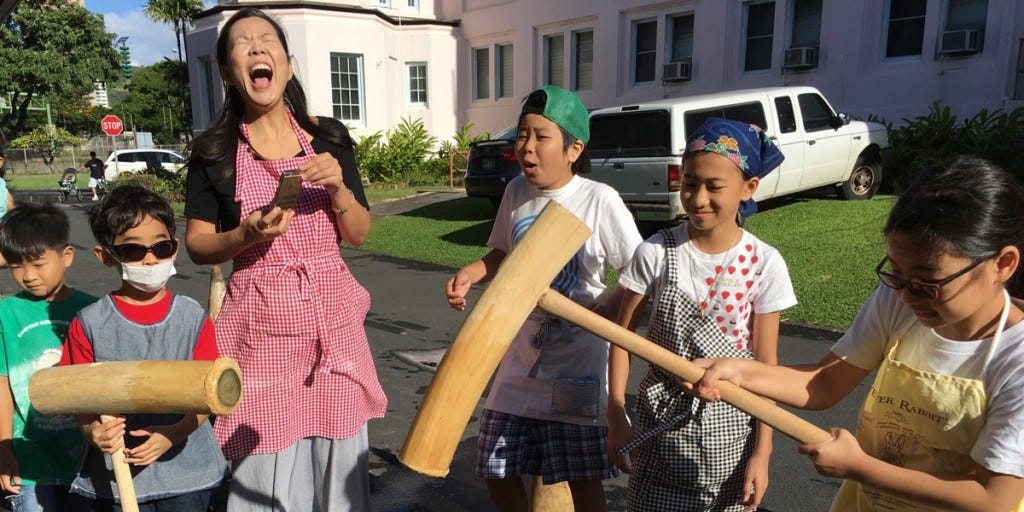
Video & Gallery: Making Mochi for the New Year
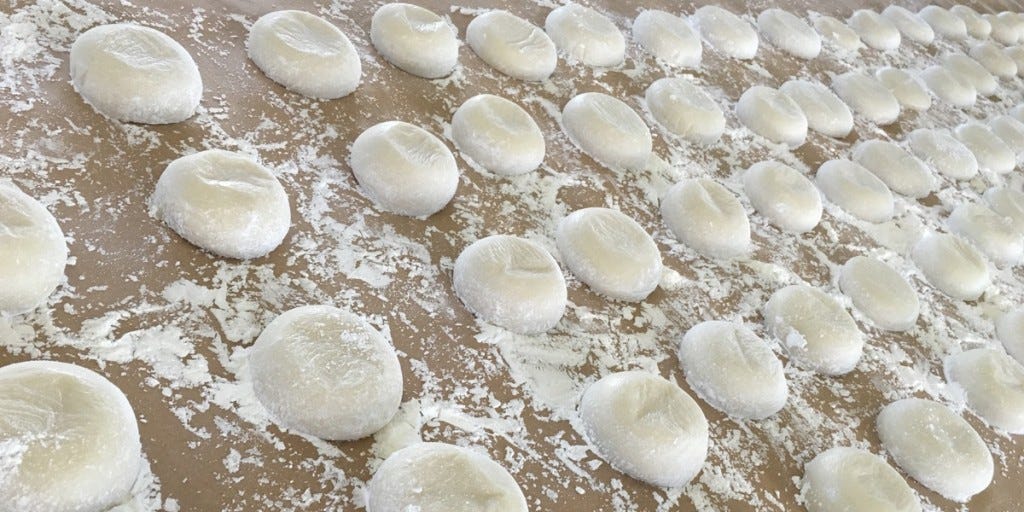
As we near the end of the year, one of the cherished traditions in Hawaii is "mochitsuki," or the making of mochi. Japanese rice cakes are enjoyed year round, of course, but mochi is the signature food of New Year's celebrations, and there are several different preparations and presentations. My wife and I are partial to ozōni, Japanese new year mochi soup.
Today the Jodo Mission of Hawaii held its mochitsuki. The mochitsuki ceremony dates back to the 10th century, but it has definitely evolved over that time. There was a traditional stone usu (mortar) and wooden kine (wooden mallets) for those who wanted to pound mochi the old-fashioned way. But the temple had to prepare more than 500 pounds of the sticky white stuff, so relied on more modern preparation methods (notably using a converted meat grinder to do the "pounding").
Are you curious about how it all happens? I've put together this video documenting today's work:
https://www.youtube.com/watch?v=TrntGmoQJnk
I've also posted a photo gallery on Flickr. Highlights are below, but you can click on any image to see the whole set.
The first thing you need to do with 500 pounds of mochi rice (a more sweeter variety than standard white rice) is to wash it thoroughly. This all happened yesterday, thanks to the hard work of many volunteers who nonetheless returned today to continue the process.
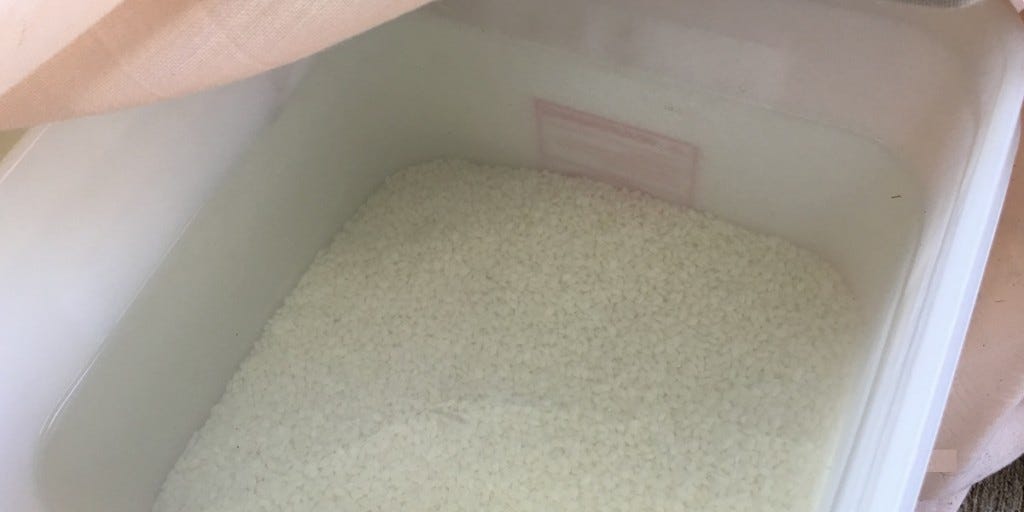
The mochi rice is first drained and placed in "seriou," or steaming baskets. These came in many shapes and sizes, from traditional wooden shelves to round metal pots.
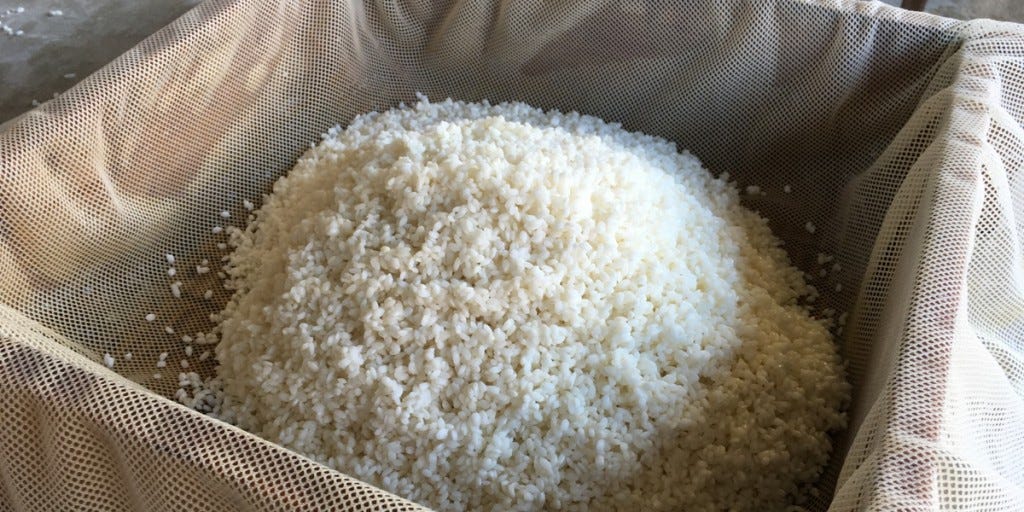
The steaming baskets are then stacked two, three, or four high on top of boiling pots of water to steam for several minutes. Since the baskets are different sizes and materials and the water pots boiled at different rates, it was no easy task keeping track of which batches of rice were newly added and which were fully cooked.
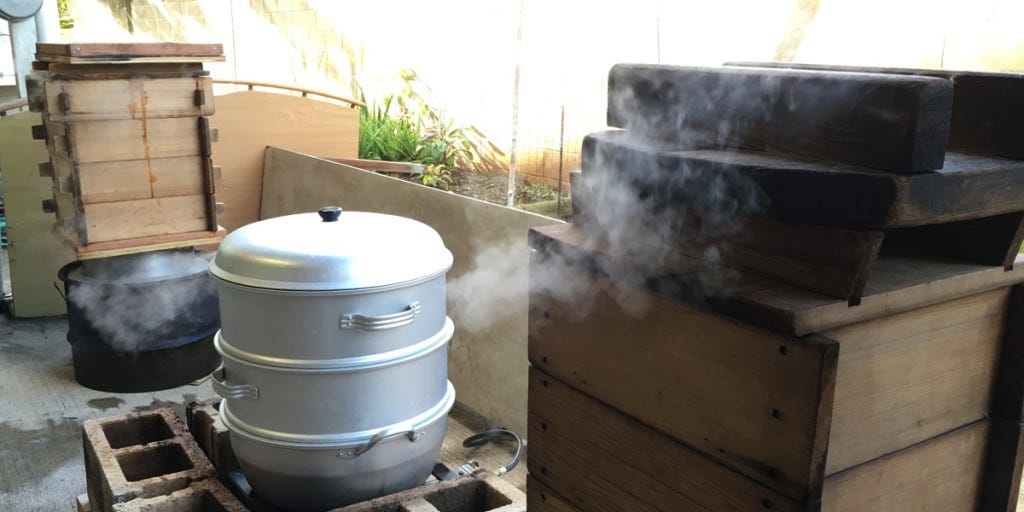
Determining when the rice was ready was the key art of mochitsuki. Fortunately, the craft has been handed down to a younger crew of temple members and volunteers now led by board member Herbert Fujikawa.
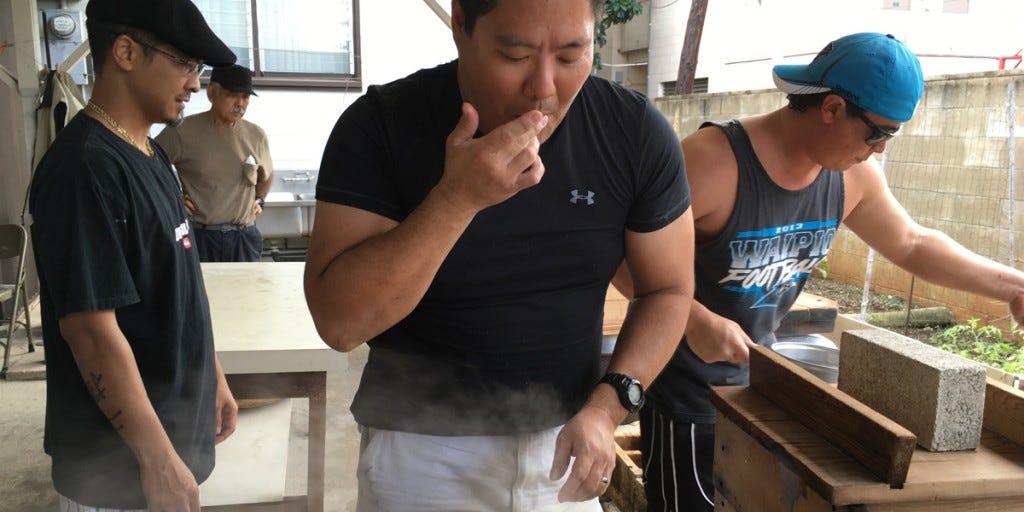
When the rice was fully cooked, it was then placed in the customized grinder to be "pounded" into a paste. Sticky and hot, it had to be constantly kneaded and pushed down into the grinder by several workers.
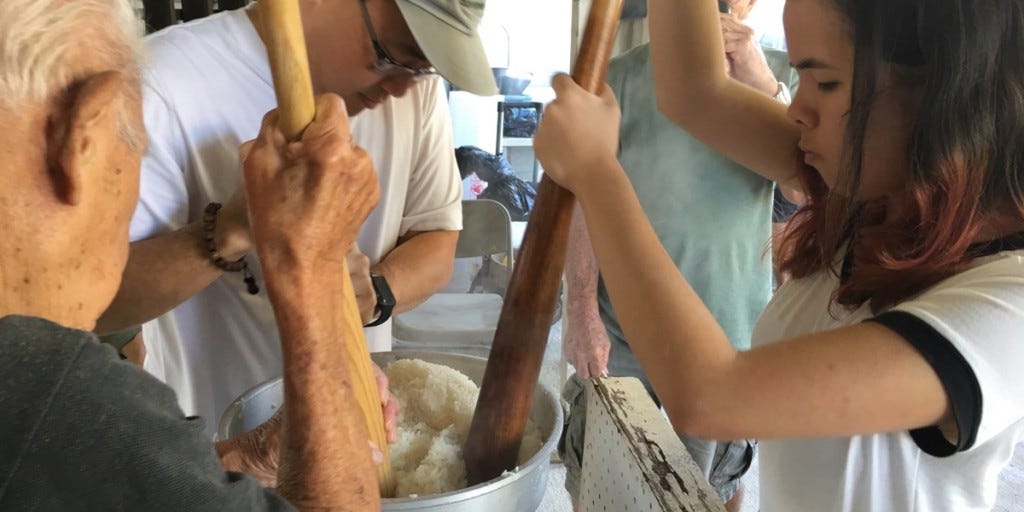
A thick tube of proto-mochi coils out of the end of the grinder. But at this point it's still pretty grainy and soft.
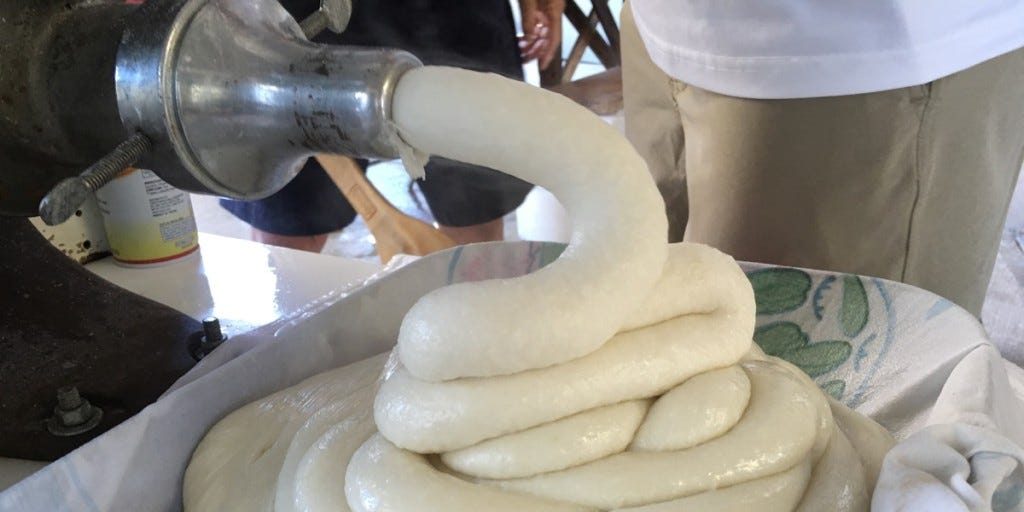
While still hot, the mochi is fed back into the grinder for a second pass.
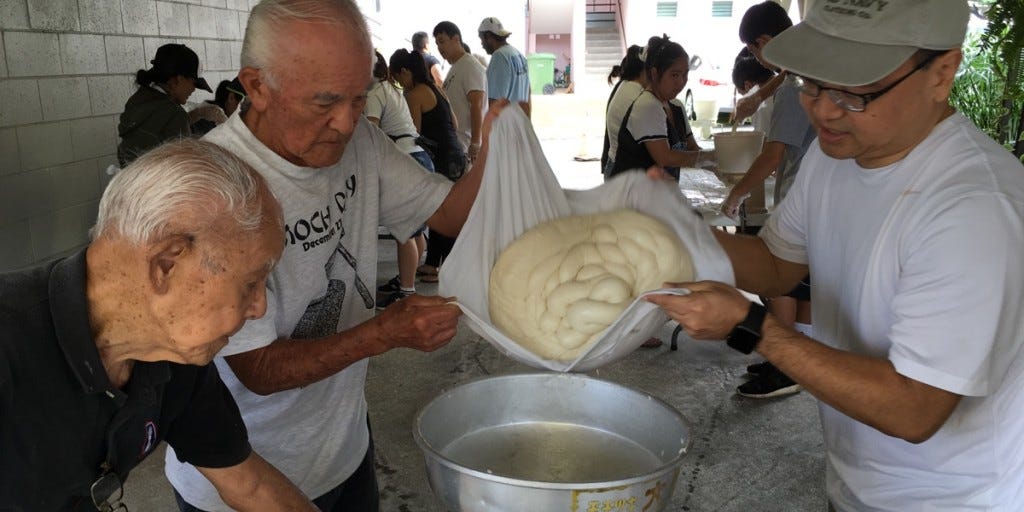
The second time through, the mochi is softer, smoother, and the perfect consistency for the next step.
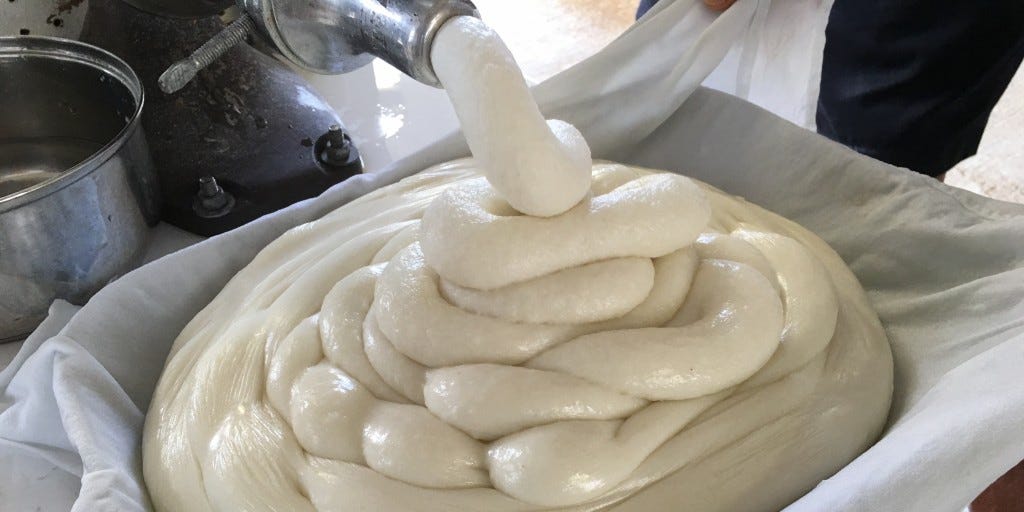
The mochi is then transferred to smaller, manual grinders that are used to knead the mochi one last time and separate it into individual balls. Getting the right size of mochi ball for the different applications was also an art.

At the peak of work, there were four separate teams gathering the mochi balls, rolling them smooth in flour, and arranging them in cooling trays.
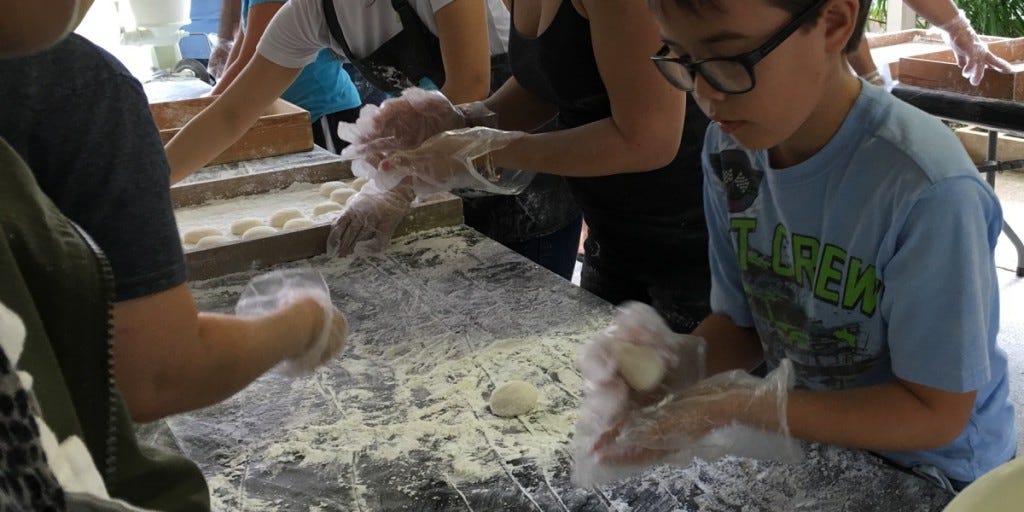
The trays of mochi were then taken into the large social hall where, as they cooled, another army of volunteers carefully dusted off most of the flour.
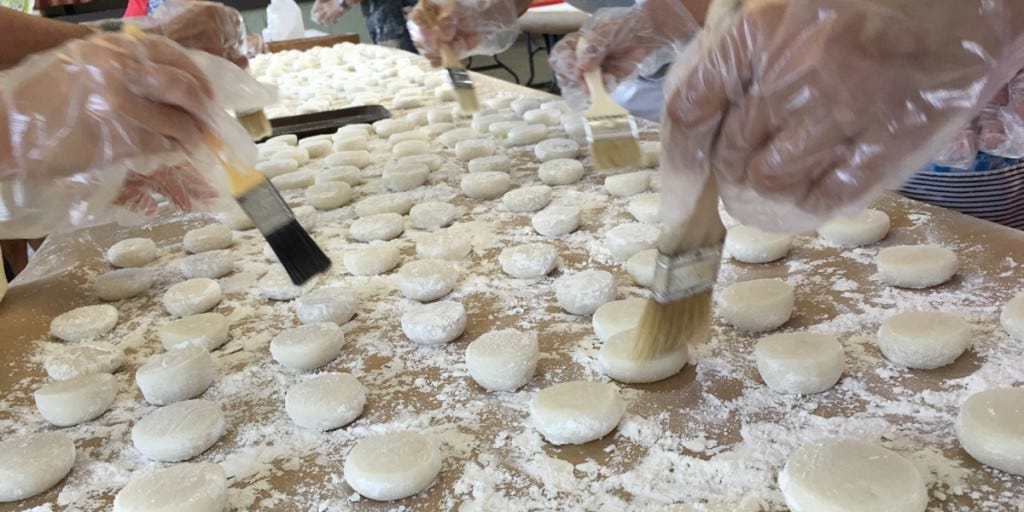
It's an impressive operation, covering three long rows of tables running the length of the social hall with mochi.
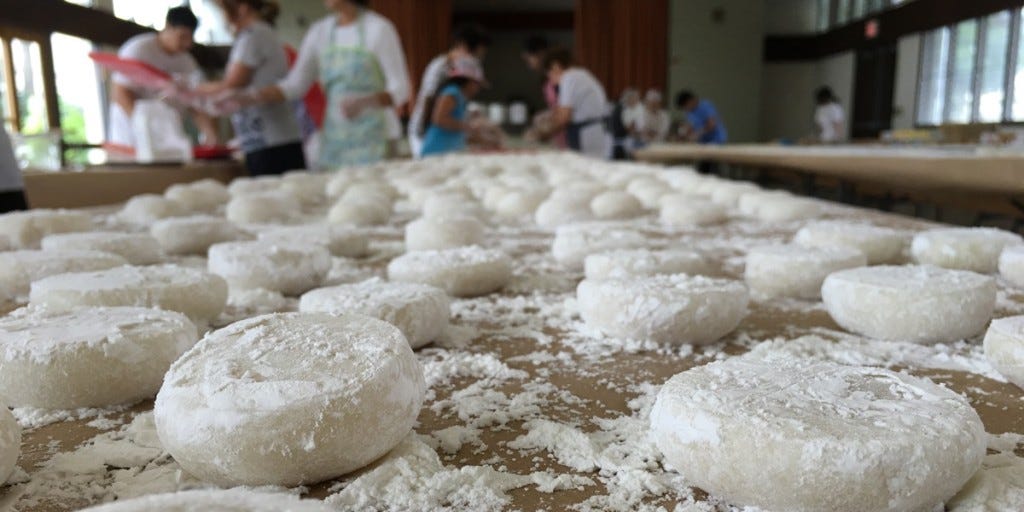
The mochi was then separated into individual orders and weighed.
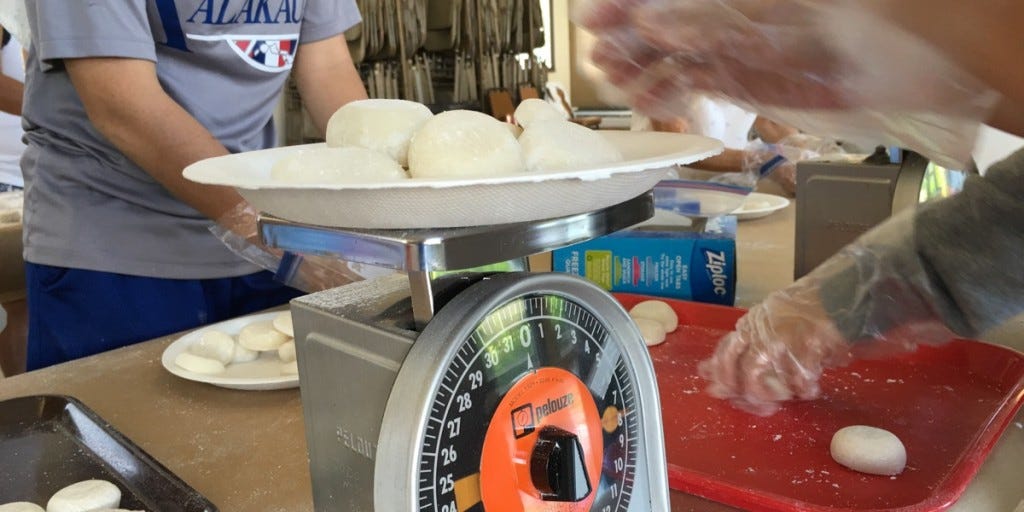
Most of the mochi was made by noon, hundreds of orders ready for pickup.
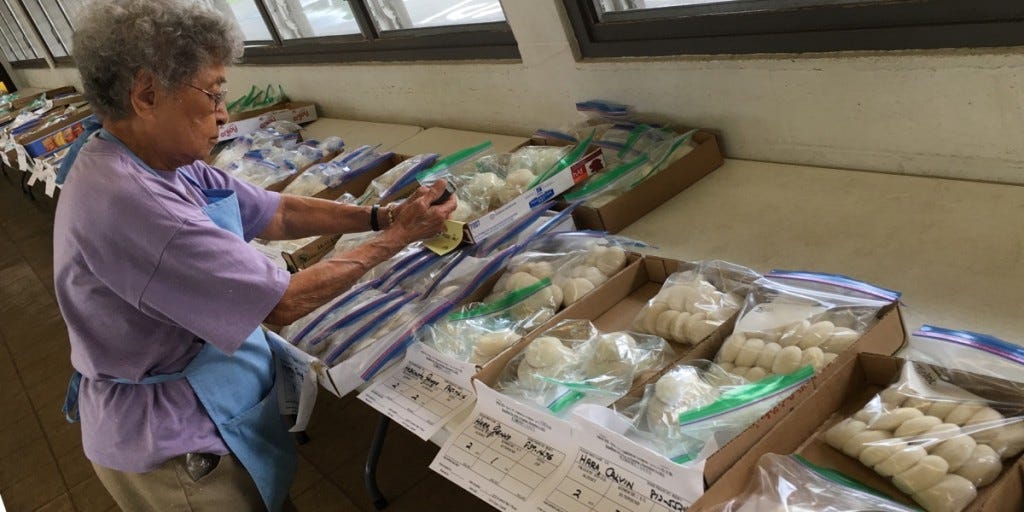
In addition to the smaller mochi servings, Rev. Yubun Narashiba worked in Ikoi Hall to make kagami mochi, much larger mochi discs that are stacked and placed on Japanese altars.
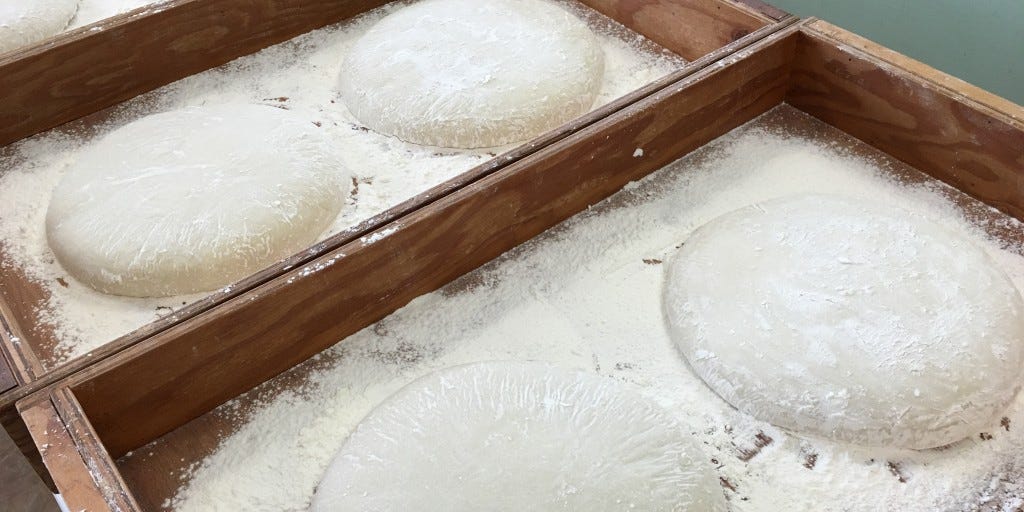
And here's the usu and kine, mostly used by the kids at today's mochitsuki. Here's my youngest, Alex, age 11.
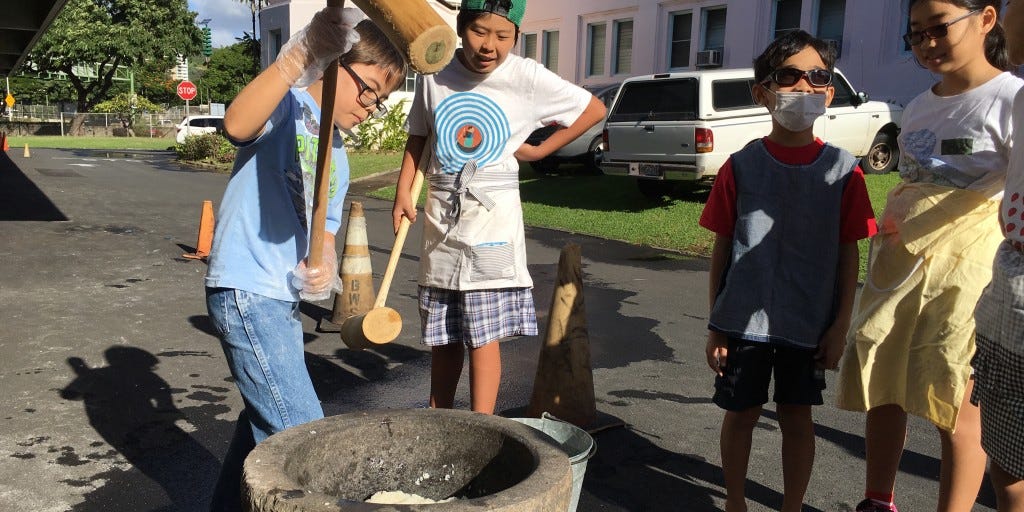
And here's my oldest, Katie, one month shy of eighteen.
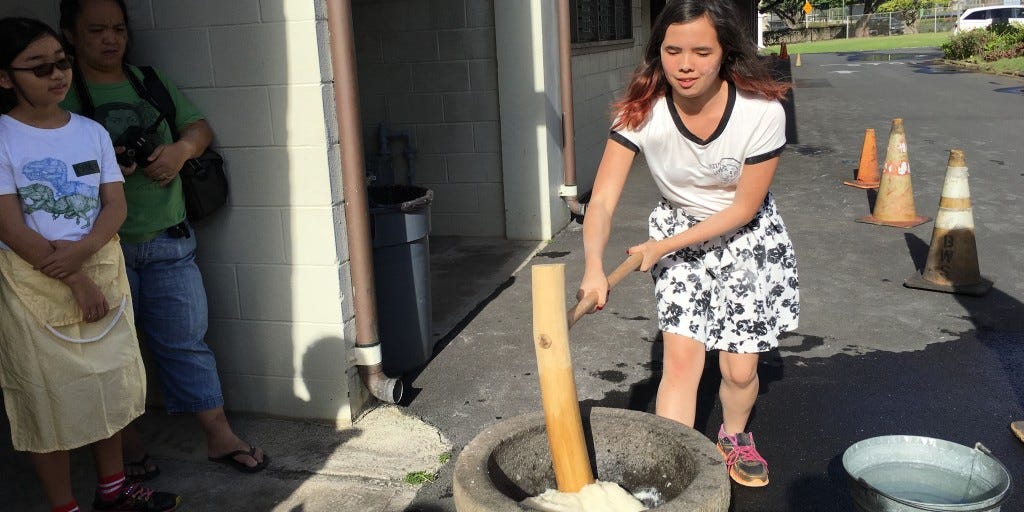
Mochitsuki is a lot of fun, and a great way to prepare for the new year!
